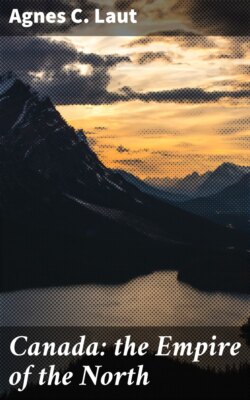Читать книгу Canada: the Empire of the North - Agnes C. Laut - Страница 37
На сайте Литреса книга снята с продажи.
TADOUSSAC (From Champlain's map)
ОглавлениеAt this stage came Champlain on the second boat. Two vessels were overstrong for the Basques. They quickly came to terms and decamped. Champlain steered his tiny craft on up the silver flood of the St. Lawrence to that Cape Diamond where Cartier's men had gathered worthless stones. Between the high cliff and the river front, not far from the market place of Quebec City to-day, workmen began clearing the woods for the site of the French habitation. The little fort was palisaded, of course, with a moat outside and cannon commanding the river. The walls were loopholed for musketry; and inside ran a gallery to serve as lookout and defense. Houses, barracks, garden, and fresh-water supply completed the fort. One day, as Champlain worked in his garden, a colonist begged to speak with him. Champlain stepped into the woods. The man then blurted out how a conspiracy was on foot, instigated by the Basques, to assassinate Champlain, seize the fort, and stab any man who dared to resist. One of Pontgravé's small boats lay at anchor. Champlain sent for the pilot, told him the story of the plot, gave him two bottles of wine, and bade him invite the ringleaders on board that night to drink. The ruse worked. The ringleaders were handcuffed, the other colonists awakened in the fort and told that the plot had been crushed. The body of Duval, the chief plotter, in pay of the Basques, swung as warning from a gibbet; and his head was exposed on a pike to the birds of the air. Though Pontgravé left a garrison of twenty-eight when he sailed for France, less than a dozen men had survived the plague of scurvy when the ships came back to Champlain in 1609.
Champlain's part had been to explore. Now that his fort was built, he planned to do this by allying himself with the Indians, who came down to trade at Quebec. These were the Hurons and Montaignais, the former from the Ottawa, the latter from Labrador. Both waged ceaseless war on the Iroquois south of the St. Lawrence. After bartering their furs for weapons from the traders, the allied tribes would set out on the warpath against the Iroquois. In June, Champlain and eleven white men accompanied the roving warriors.
The way led from the St. Lawrence south, up the River Richelieu. Champlain's boat was a ponderous craft; and when the shiver of the sparkling rapids came with a roar through the dank forest, the heavy boat had to be sent back to Quebec. Adopting the light birch canoe of the Indian, Champlain went on, accompanied by only two white men. Of Indians, there were twenty-four canoes with sixty warriors. For the first part of the voyage night was made hideous by the grotesque war dances of the braves lashing themselves to fury by scalp raids in pantomime, or by the medicine men holding solemn converse with the demons of earth; the tent poles of the medicine lodge rocked as if by wind, while eldritch howls predicted victory. Then the long line of silent canoes had spread out on that upland lake named after Champlain, the heavily forested Adirondacks breaking the sky line on one side, the Green Mountains rolling away on the other. Caution now marked all advance. The Indians paddled only at night, withdrawing to the wooded shore through the morning mist to hide in the undergrowth for the day. This was the land of the Iroquois.
